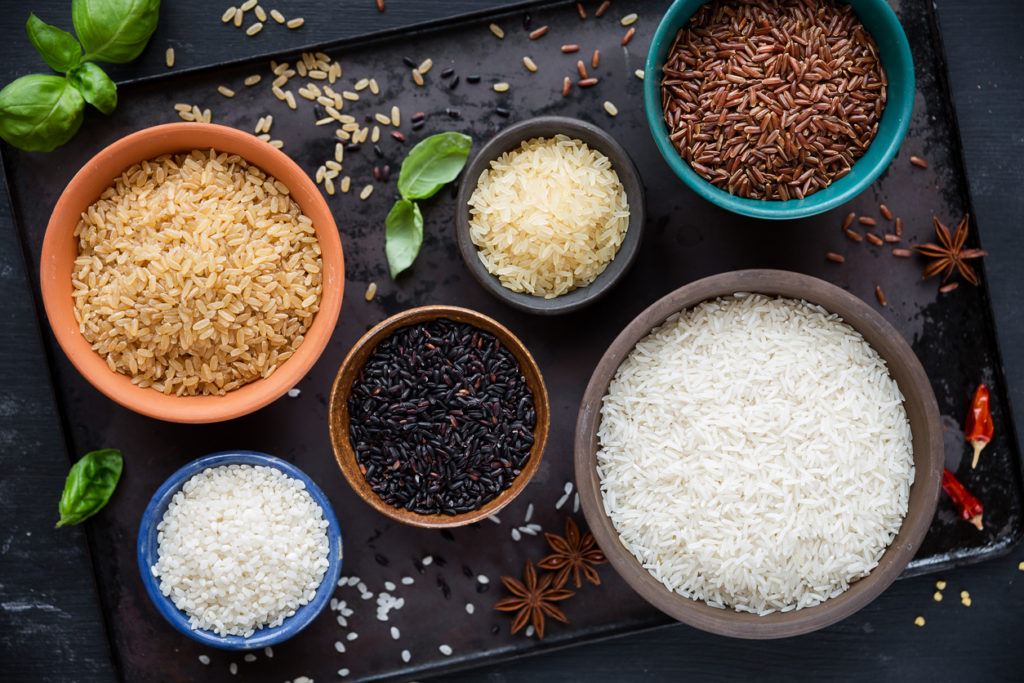 November 2, 2019
November 2, 2019
 Allergy, Education, Healthy Food, Healthy Living, Nutrition
Allergy, Education, Healthy Food, Healthy Living, Nutrition  Leave a comment
Leave a comment  non-dairy, oat milk; milk
non-dairy, oat milk; milkFor anyone who is watching calories or blood sugar levels, rice is often treated like an unwanted cousin at a family reunion. This is not entirely fair. All rice is not created equal and many varieties exist that are healthy choices to the non-nutritious, high in starch, white-rice variety.

Why is White Rice So Bad for You?
The way white rice is processed, says Sparshita Saxena, of NDTV Food, “…it falls short on some essential nutrients like thiamine, also known as B1 as well other B Vitamins. Consuming un-enriched white rice can lead to a condition called beriberi, which occurs due to thiamine deficiency. White rice is also treated with additives that can – in certain cases – harm human body and trigger metabolic disorders like diabetes, obesity and so on.” White rice is processed to remove the hull and the germ. These two elements of the rice hold much of the dietary fiber in rice, as well as a lot of the nutrients.
Can Rice Be Healthy?
The good news is that rice comes in about 40,000 different varieties, so finding something healthier is quite simple. Colored rices are typically excellent choices for rice with fiber and nutritional benefits. Two varieties that are particularly good choices for diabetics and those watching their calorie intake are brown and red rice. Both contain the germ and the hull. According to Dr. Gargi Sharma, “Brown rice and red rice are quite similar when we talk about them on the nutritional front. Both are great sources of fiber, B vitamins, calcium, zinc and iron, manganese, selenium, magnesium and other nutrients.” The fiber is very important since it requires the digestive system to work hard to process the food, slowing down how fast carbohydrates are converted into sugar. This makes brown or red rice particularly good choices for diabetics and those watching their calorie intake are brown and red rice.
Possibly the healthiest kind of rice is black rice, sometimes called the Forbidden Rice in China. Not only does it turn purple when it is cooked, it contains a plethora of good nutrients including antioxidants, Vitamin E, protein, and iron. It’s full of fiber and contains anthocyanins, which help to reduce the risk of cancer.
Whole grain brown, red or black rice, are beneficial for diabetics because of the large amount of fiber in the grain. These varieties also help to reduce arterial plaque, helping to lower high cholesterol, and prevent heart disease. Look for a variety of whole grain rice wherever you do your grocery shopping. It can help to liven up your dinner table, and keep you feeling healthy as well.

